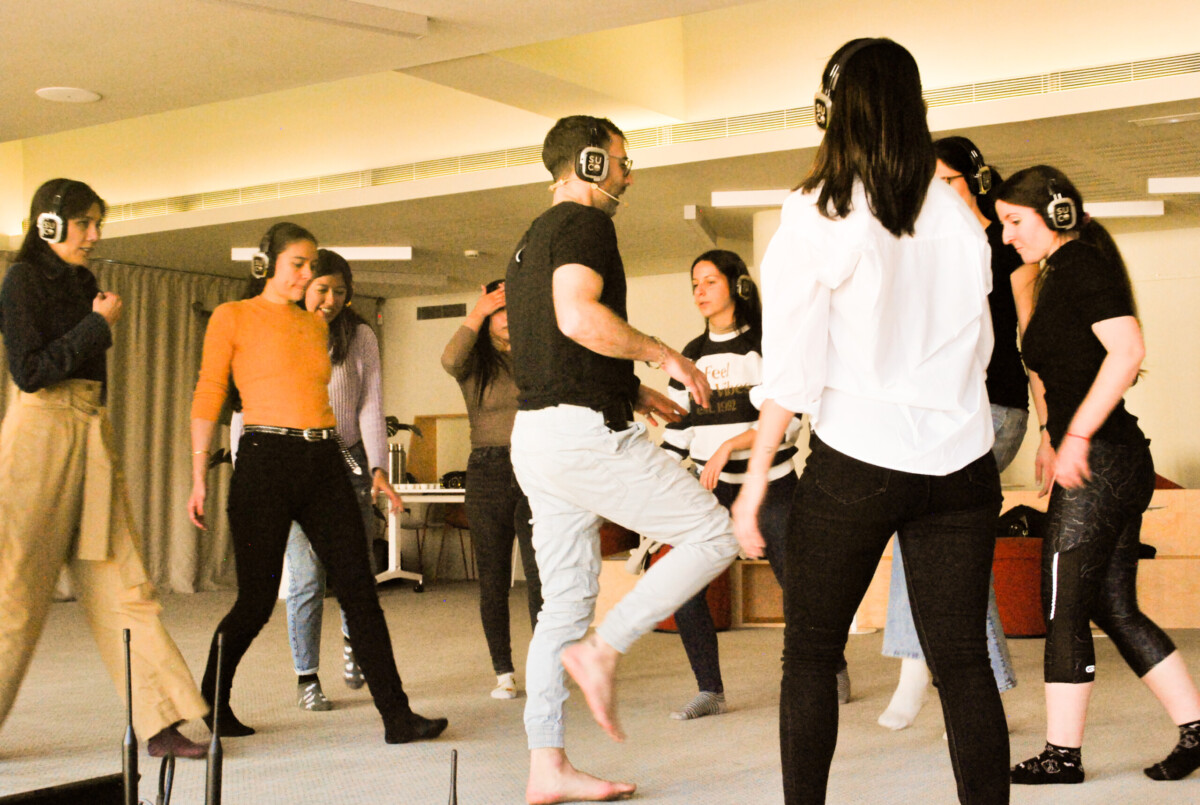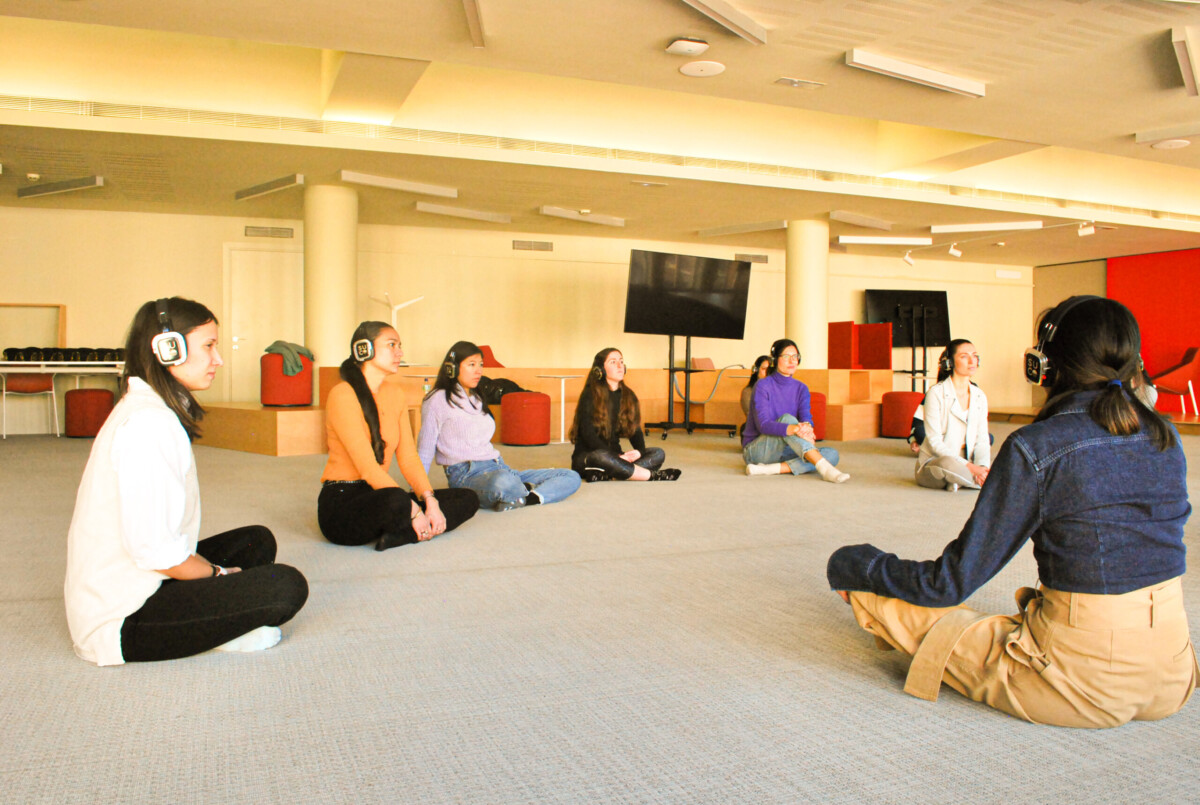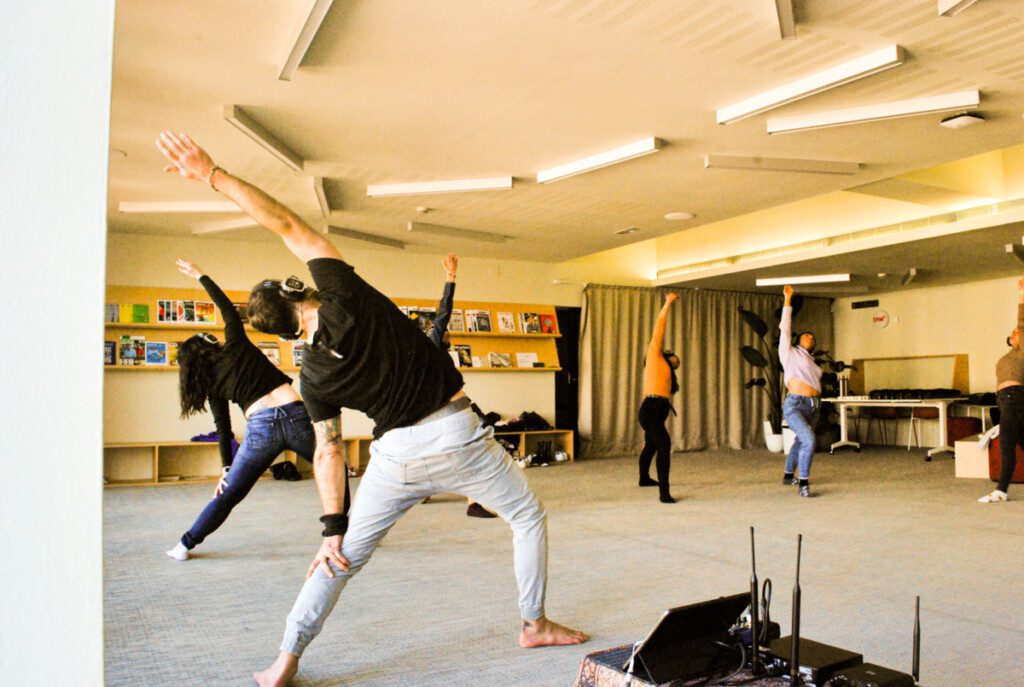Articles

The Benefits of Mentorship in Entrepreneurship
7 de May de 2024

If someone talks to you about meditation, you will most likely think of a silent room, someone sitting with crossed legs on a cushion, eyes shut and hands on knees.
But there’s a meditation model in which a group of people wearing headphones jump, move their bodies and even interact with the person next to them. Can you imagine? If your answer is no, then you most probably haven’t heard —yet— about active meditation with music.
Before we explain this alternative modality for meditating, let’s discuss meditation as an activity to connect:
Meditation is a relaxation practice in which our body and mind enter a resting state for an extended period, without any significant disturbances and without the need to achieve any goal in particular. The general belief is that meditation means disconnection. But, actually, its main goal is to connect with the present time and escape the noises made by our minds throughout the day.
There are several ways of practising and learning meditation. In fact, some apps have been around for some time now, like Calm or Headspace, that allow people with no previous knowledge to delve into the world of meditation.

But, what’s the origin of this activity? There’s no definite answer to this, but it’s believed that this practice finds its roots in India. There are documents that prove its existence that are more than 3,000 years old in Vedic-Hinduistic tradition. In the West, there was no information until the 18th century, with the increased interest in Buddhism. Thanks to this embracement of the world of relaxation, new forms of meditation were born.
It’s based on the same core principles of traditional meditation. We must connect with the present time and calm the mind. But the big difference is that the way it takes you to that goal is by movement and breathing. Exercise and movement are allowed. Absolute stillness is not the goal.
Active meditation is a great alternative for people who are incapable of remaining for long periods quiet and still. In fact, exercise produces dopamine — a collateral benefit that will help you go through your days with maximum efficiency.
In some cities, like Barcelona, this alternative is gaining ground thanks to its non-traditional relaxation techniques. The pioneer of these types of activities is SUCO.

Its founder, Jaimie Beron, started researching the different meditation models back in 2016 and he kickstarted a groundbreaking format. Its appeal was to include all types of profiles in the practice of meditation: active, restless and those who can’t withstand silence. Stillness in meditation is often hard to achieve. That’s why active meditation seeks to find that silence in the mind, not in the body; because the body will be the medium through which we will get meditation to work.

Here at the Switch, we were so excited about SUCO sessions and the idea of this practice of joy that we couldn’t resist inviting EAE Barcelona to try this amazing experience. We organised an ad-hoc session for the EAE community as the main activity during Wellbeing Week under our motto “Light the Switch with SUCO”. We wanted Jaime, electronic music and active meditation to help us light our inner switch, the one that allows us to be more creative, more healthy, more connected and better professionals and people.

SUCO’s active meditation is a practice that offers different sensations —from physical to mental—, mostly, in the search of joy. It also invites you to connect with others, fostering teamwork.
The session sponsored by the Switch was the exemplification of the benefits of movement in meditation, which matches up to traditional practices. It helps us out of the mind and into the body, reducing stress and taking root in the present time.
It goes without saying that the star of the show is the music. It’s the channel that helps us focus on the moment. Because, with headphones on, you enter a space in which there is nothing else but the music, Jaime’s voice and the present time.
Active meditation helps control anxiety and stress. But, most of all, it eliminates the sedentary nature of the sessions to bring rhythm and activation to our bodies. It uses movent to its favour, to meditate. An increasingly popular practice among students.